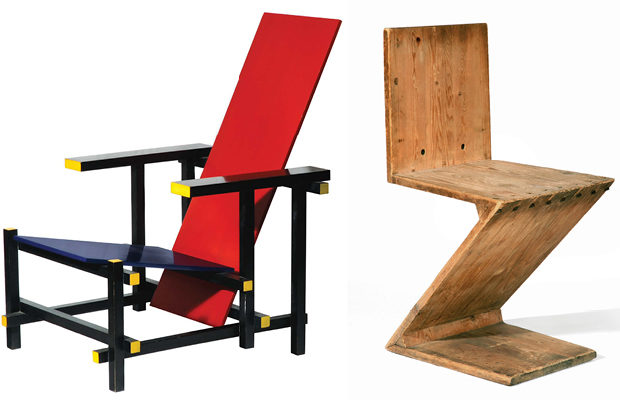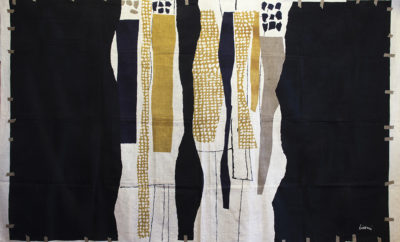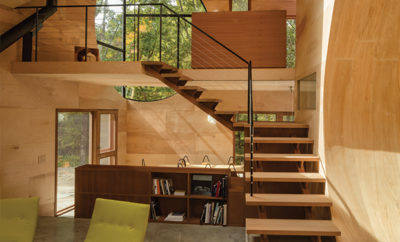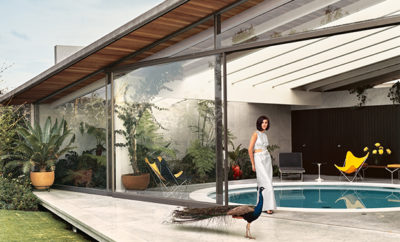 KIRKLAND MUSEUM OF FINE & DECORATIVE ART, DENVER | COURTESY THE WOLFSONIAN-FIU, MIAMI BEACH, FLORIDA
KIRKLAND MUSEUM OF FINE & DECORATIVE ART, DENVER | COURTESY THE WOLFSONIAN-FIU, MIAMI BEACH, FLORIDA
Exhibition
Dutch Feat
AN ORNATE FRAMED DOOR stands front and center at the start of the Wolfsonian’s new exhibition, Modern Dutch Design. It is at once a symbolic welcome (enter here, though you actually walk around the door, not through it) and a fitting metaphor for the journey that is to follow, an exhibition that traces the trajectory of design and architecture in the Netherlands during the half century between 1890 and 1940. The show’s straightforward title belies its scope and complexity, for, in fact, the Netherlands has long been—in the worlds of art and design particularly— a small country with a big reach.
“Nature, stylized and symmetrically reduced to its basic forms, was essential to the training in ornamentation received by students in the [Dutch] schools for applied arts”
To begin with, the exhibition is beautiful to look at. There are some “aha!” moments—among them the oak, fruitwood, and brass door as well as a fireplace designed by Theo Nieuwenhuis for an Amsterdam lawyer (the Wolfsonian owns the entire interior, but space constraints restricted their debut to the two pieces) and chandeliers and a clock made for prosperous shipping companies early in the twentieth century. There are a few familiar and highly important pieces, too, such as two justly famous chairs by Gerrit Rietveld and memorable posters that recall the golden age of travel of the 1920s and 1930s, created for the Holland America Line, Rotterdam Lloyd, and KLM, among others.
Mitchell Wolfson Jr. began collecting Dutch design decades before it was in vogue. As he traveled the world, he built a vast collection of furniture, objects, books, paintings, works on paper, and more that ultimately became the core of the museum he founded, now officially called the Wolfsonian-FIU, as it is part of Florida International University. The Wolfsonian’s collection encompasses some 180,000 objects, but one of its great strengths is the comparatively untapped and rich world of early Dutch modernism.
With only a handful of borrowed pieces, the exhibition relies almost entirely on work from the Wolfsonian, ranging from large-scale architectural elements to objects as small as a tea service; the museum’s extraordinary collection of works on paper including books, posters, and advertising brochures dominates.
Silvia Barisione, the Wolfsonian’s curator as well as the exhibition’s curator, is very much a scholar, as is evidenced by her definitive and detailed essay in the accompanying catalogue. As a result, Modern Dutch Design is intellectually rich, connecting the threads of chronology, style, and the ideological underpinnings of the predominant artistic movements during the period.
Often, modernism is thought to be a twentieth century phenomenon, but as Barisione points out, it had its roots in the period just before the turn of that century. By the 1890s, European artists and designers were taking inspiration from the British arts and crafts ideals of a strong commitment to handcraft and a fervent belief that art and design should benefit society.
The Dutch version—Nieuwe Kunst (New Art)— differed from the more fluid art nouveau in other parts of Europe in that it had, as Barisione writes in her catalogue essay, “an austere, geometric, and twodimensional character. . . . Nature, stylized and symmetrically reduced to its basic forms, was essential to the training in ornamentation received by students in the schools for applied arts founded in the late nineteenth century.” Other dominant influences came from the then prevalent Theosophical movement’s conviction that the cosmos is founded on geometric principles and, further and perhaps in a more romantic vein, from the Dutch colonization of the East Indies, which brought with it both the knowledge of and inspiration for exotic motifs and batik techniques.
As time went on, new design movements emerged. Besides Nieuwe Kunst, the exhibition features work from the more expressionist Amsterdam School, the utopian De Stijl, and the pragmatic reformist Nieuwe Bowen, tracing the evolution from the figurative to the abstract, in which the geometric stylization of nature gave way to geometry plain and simple.
The best-known works in Modern Dutch Design are from De Stijl, which was founded after Theo von Doesburg and Piet Mondrian launched a journal of the same name that railed against the ornamental excesses of the past. With its pure forms and clean lines (not to mention primary colors), De Stjil attracted such important figures in the history of Dutch (and modern) design as Rietveld, whose Red Blue and Zig Zag chairs are in some ways representative of the movement.
It’s intriguing to see the body of work and to discover how much of the country’s significant and broad design patrimony is known internationally and what is left to learn. A strong theme running through Modern Dutch Design is the notion of social responsibility going forward from the early Nieuwe Kunst designers, Barisione writes in her catalogue essay, who “believed artists should transform daily life by redesigning the environment: interiors, books, calendars, posters, and ephemera.” And as time went on, this concept gained wider application, most particularly in architecture. The exhibition pays full homage to this dichotomy, in which social-minded (and often early socialist) designers relied on patrons and clients for their well-being but, at the same time, grappled with the perplexing issues brought on by industrialization and urbanization.
Some of this is shown through images of Dutch social housing, but there are also dramatic polemical posters that glorify the trade unions and exhort worker unity. Indeed, the posters displayed throughout are particularly striking— many of them well-known at least to aficionados of graphic design and almost all of them memorable. In particular, the typography that came out of De Stjil became emblematic of a country and an era, particularly from the 1920s forward, when the Dutch played an important role in such areas as product manufacturing (Philips, for example) and shipping, as well as travel.
On May 10, 1940, Adolf Hitler invaded the Netherlands, and in defeat, the country was placed under Nazi occupation. What had been a flourishing tradition of design was silenced. Yet to see Modern Dutch Design is invigorating, not sobering—an eyewitness to a half century of remarkable creativity.













